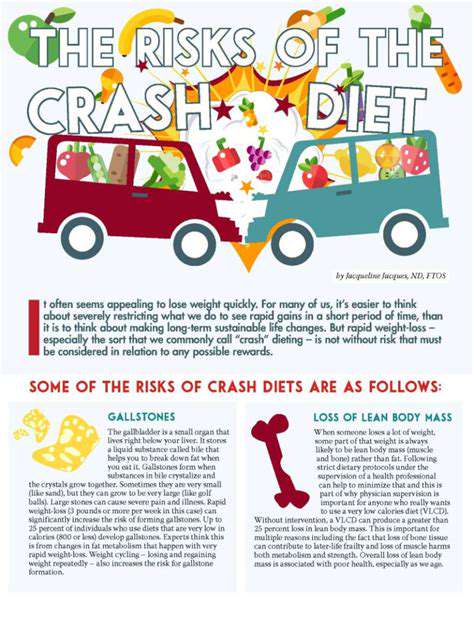Understanding Metabolic Rates in Pets
What is Metabolic Rate, and Why Does It Matter for Pets?
What is Metabolic Rate?
Metabolic rate, in simple terms, is the rate at which your pet's body burns calories to maintain its essential functions like breathing, circulating blood, and regulating temperature. This continuous process, essential for life, involves complex chemical reactions within cells. Understanding the nuances of this process is crucial for maintaining optimal pet health and well-being, especially as pets age or face health challenges.
Different factors influence a pet's metabolic rate, including breed, age, activity level, and overall health condition. A higher metabolic rate means a pet burns more calories, requiring a higher caloric intake to maintain weight and energy levels. Conversely, a lower metabolic rate might necessitate adjustments in dietary intake to prevent weight gain.
Factors Affecting Metabolic Rate in Pets
Several factors play a significant role in determining a pet's metabolic rate. Genetics, breed-specific traits, and age are all important considerations. A young, active, growing puppy will have a higher metabolic rate than a senior, less active cat. Furthermore, the presence of underlying health conditions, such as hypothyroidism or hyperthyroidism, can significantly impact metabolic processes, leading to either increased or decreased calorie needs.
Environmental factors also play a part. A pet living in a colder climate may require a higher caloric intake to maintain body temperature, thus increasing their metabolic rate. Exercise is another key factor. Active pets require more calories to fuel their movements and activities.
The Importance of Metabolic Rate for Weight Management
Metabolic rate is intrinsically linked to weight management. If a pet's metabolic rate is lower than their caloric intake, they're likely to gain weight. Conversely, if their metabolic rate is high and their caloric intake is insufficient, they may lose weight.
Maintaining a healthy weight is crucial for a pet's overall well-being. Obesity can lead to various health problems, including joint issues, diabetes, and heart disease. Understanding a pet's metabolic rate and adjusting their diet and activity levels accordingly are essential for achieving and maintaining a healthy weight range.
Metabolic Rate and Dietary Needs
A pet's metabolic rate directly impacts their dietary needs. A higher metabolic rate requires a higher calorie intake to maintain energy levels, while a lower metabolic rate might necessitate a lower calorie intake to prevent weight gain. A balanced diet tailored to the specific needs of the pet, age, and activity level is crucial for supporting their metabolic processes and ensuring optimal health.
Consulting a veterinarian or a qualified pet nutritionist is crucial to determine the appropriate dietary requirements for a pet based on their individual metabolic needs.
Metabolic Rate and Activity Levels
An active pet, whether a playful puppy or a hiking dog, requires more calories to fuel their movements and activities. Their metabolic rate increases with increased activity. Conversely, a less active pet may have a lower metabolic rate, requiring a lower caloric intake to maintain a healthy weight.
Adjusting a pet's exercise routine in accordance with their metabolic needs is essential for ensuring they get enough physical activity without overexerting themselves, especially important for senior pets.
Metabolic Rate and Age-Related Changes
As pets age, their metabolic rate naturally tends to decrease. This can lead to a decrease in calorie requirements to maintain a healthy weight, as their activity levels often decrease with age. Understanding these age-related changes is essential for adjusting dietary plans and exercise routines accordingly.
Senior pets may require a lower calorie diet to prevent weight gain, which can lead to various health complications. Consulting a veterinarian is crucial to ensure that dietary adjustments are made safely and effectively.
Metabolic Rate and Health Conditions
Certain health conditions can significantly impact a pet's metabolic rate. Conditions like hypothyroidism and hyperthyroidism can lead to either increased or decreased metabolic rates, affecting calorie needs. Monitoring a pet's weight and energy levels is critical in the event of a health condition.
A veterinarian can assess a pet's overall health and metabolic rate, providing personalized advice and dietary recommendations to address any health-related concerns that may be impacting their metabolic processes.
Factors Influencing Your Pet's Metabolic Rate
Genetic Predisposition
Genetic factors play a significant role in determining a pet's metabolic rate. Breeds are often associated with specific metabolic tendencies. For example, smaller breeds, like Chihuahuas, generally have a higher metabolic rate compared to larger breeds like Great Danes, requiring more frequent and smaller portions of food to maintain their energy levels. Understanding a pet's breed-specific metabolic tendencies can help owners tailor their feeding and exercise routines accordingly to ensure optimal health.
Furthermore, specific genetic variations within a breed can also influence metabolic rate. These variations can impact how efficiently the body processes nutrients and converts them into energy. Owners should be aware of these potential genetic predispositions, especially if they observe signs of weight gain or loss in their pets that deviate from typical expectations for their breed.
Age and Life Stage
A pet's age significantly impacts its metabolic rate. Puppies and kittens, in their rapid growth phases, have a naturally high metabolic rate to support their development. This high metabolic rate requires a specific nutritional and caloric intake to meet their increased energy demands. As pets age, their metabolic rate naturally slows down, often leading to a decreased need for calories.
Senior pets may also experience changes in their metabolic function, affecting their ability to digest and process nutrients. This necessitates adjustments to their diet and exercise regimen to maintain a healthy weight and overall well-being. Monitoring a pet's weight closely throughout their life stages is crucial to maintaining a healthy metabolic rate.
Activity Level
A pet's activity level is a crucial factor affecting its metabolic rate. Highly active pets, like dogs that participate in rigorous training or outdoor activities, need more calories to fuel their increased energy expenditure. Conversely, pets with a more sedentary lifestyle require fewer calories to maintain their body weight.
Owners should adjust their pet's food intake to match their activity level. Overfeeding an inactive pet can lead to weight gain and related health problems, while underfeeding an active pet can lead to energy deficiency and poor health. Matching caloric intake with the amount of energy expended is essential for maintaining a healthy metabolic balance.
Environmental Factors
Environmental factors, such as temperature, can influence a pet's metabolic rate. In cold climates, pets may require more calories to maintain their body temperature, increasing their metabolic rate. Conversely, in hot climates, their metabolic rate might decrease to conserve energy.
Furthermore, changes in a pet's environment, such as moving to a new home or experiencing stressful situations, can impact their metabolic rate. Stress can trigger hormonal changes that affect metabolism. Owners should monitor their pets for any changes in appetite, weight, or activity levels in response to environmental changes, and consult a veterinarian for appropriate adjustments to their care plan.
Hormonal Imbalances
Hormonal imbalances can significantly impact a pet's metabolic rate. Conditions like hypothyroidism, where the thyroid gland produces insufficient thyroid hormones, can slow down metabolism, leading to weight gain and other health issues. Conversely, hyperthyroidism, characterized by excessive thyroid hormone production, can increase metabolic rate, resulting in weight loss, increased appetite, and other symptoms.
Other hormonal imbalances, such as those affecting the adrenal glands or reproductive system, can also influence metabolic processes. Regular veterinary checkups are essential to detect any hormonal irregularities and implement appropriate treatment plans, which can help restore a healthy metabolic balance.
Underlying Health Conditions
Underlying health conditions can significantly impact a pet's metabolic rate. Conditions like diabetes, liver disease, or kidney disease can disrupt the body's ability to process nutrients and regulate metabolism. These conditions can lead to increased or decreased metabolic rates, requiring adjustments to dietary intake and veterinary intervention to manage the underlying health issue.
Owners should be vigilant about any changes in their pet's health, such as changes in appetite, weight, or energy levels. Early detection and treatment of underlying conditions are crucial for maintaining a healthy metabolic rate and overall well-being of the pet.
How to Assess Your Pet's Metabolic Rate
Understanding Basal Metabolic Rate (BMR) in Pets
A pet's basal metabolic rate (BMR) is the minimum amount of energy their body needs to function at rest. This encompasses vital processes like breathing, circulation, and maintaining body temperature. Factors such as breed, age, and overall health significantly influence a pet's BMR. Understanding this fundamental aspect of their physiology is crucial for providing appropriate nutrition and exercise plans.
A higher BMR often correlates with a higher energy expenditure. This means that some breeds, like active working dogs or energetic cats, require more calories to sustain their daily activities compared to their more sedentary counterparts.
Factors Affecting Metabolic Rate
Several factors contribute to variations in a pet's metabolic rate. These include age – puppies and kittens have higher BMRs due to rapid growth and development, while senior pets typically have lower ones. Breed plays a significant role, with larger breeds generally having higher BMRs to maintain their larger bodies. Underlying health conditions, such as hypothyroidism or hyperthyroidism, can drastically affect metabolic processes, requiring careful monitoring and adjustment to dietary needs.
Assessing Activity Level
Observing your pet's activity level is a key indicator of their metabolic needs. A highly active pet, consistently engaging in vigorous play or long walks, will burn more calories and thus require a higher caloric intake to maintain their energy levels. A sedentary pet, spending most of their time resting, will have a lower metabolic rate and consequently require a lower caloric intake. This careful observation helps tailor feeding strategies effectively.
Recognizing subtle changes in activity levels is crucial. A decrease in playfulness or an increase in sleeping could signal a potential health issue or a need for adjustments to their diet or exercise routine.
Dietary Needs and Metabolic Rate
A pet's metabolic rate directly influences their dietary needs. Animals with higher metabolic rates require more frequent and potentially higher-calorie meals to sustain their energy demands. Conversely, pets with lower metabolic rates can thrive on smaller, less frequent meals. The type of food, including its protein, fat, and carbohydrate content, also plays a crucial role in meeting their metabolic requirements. A balanced diet formulated for their specific needs, age, and activity level is essential.
Monitoring Weight and Body Condition
Regular monitoring of your pet's weight and body condition score (BCS) is vital for assessing their metabolic health. A healthy BCS ensures that they're maintaining an appropriate weight for their breed and size, indicating that their caloric intake and expenditure are balanced. Sudden weight fluctuations, either increases or decreases, can signal underlying metabolic issues that need veterinary attention. Understanding these patterns allows for timely intervention and proactive management of their overall well-being.


Read more about Understanding Metabolic Rates in Pets
Hot Recommendations
- Holistic Pet Health: Integrating Approaches
- The Future of Pet Identification: Biometric Scanners
- Service Dogs for PTSD: A Guide to Support
- The Benefits of Non Anesthetic Professional Teeth Cleaning
- Herbal Supplements for Pet Joint Health
- The Intersection of IoT and Pet Wellness
- Healthy Weight Management for Senior Pets
- The Best Pet Beds for Orthopedic Support and Comfort
- Competitive Dog Sports: Agility, Flyball, Dock Diving
- Luxury Pet Hotels: Pampering Your Beloved Pet











